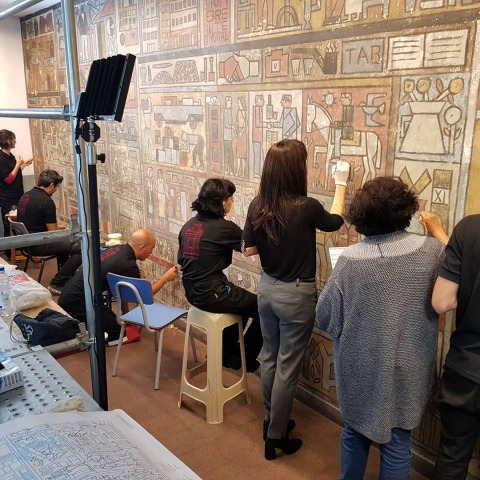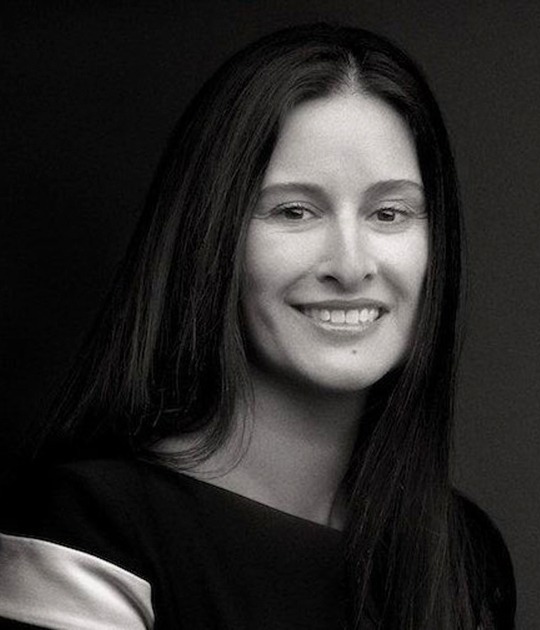The Mural "Oficios" by Julio Alpuy, direct disciple of the maestro Joaquín Torres García is one of the most representative works of the artist. It demonstrates, in addition to the domain of the constructivist codes, the cultural and intellectual respect for the world of productive work by incorporating in the mural the signs of the carpenter, the potter, the aguatero, the musician, the poet, the teacher, the rural worker ...
It is located in the Liceo "Dámaso Antonio Larrañaga", institute of secondary education built by the architect José Scheps, and designated "National Historic Monument" in 2015 for its representative architectural qualities of a stellar moment of Uruguayan architecture channeled into the modern movement.
The mural, deeply deteriorated with the passage of time, was restored with the participation of several Uruguayan and foreign institutions. The previous work of diagnosis and the establishment of an intervention methodology was carried out by teams of the School of Architecture and Engineering of the Universidad de la República and sent to a Mexican laboratory specialized in restoration of murals. In addition, the restoration included the participation of a team from the Universidad de Barcelona.
The complementary works and previous studies demanded 8 months, and the restoration process required a year for its completion.
The inauguration will take place on June 12 at 10 and 30 hours at the Dámaso Antonio Larrañaga High School with the presence of Uruguayan Minister of Education and Culture Dr. María Julia Muñoz.
It is located in the Liceo "Dámaso Antonio Larrañaga", institute of secondary education built by the architect José Scheps, and designated "National Historic Monument" in 2015 for its representative architectural qualities of a stellar moment of Uruguayan architecture channeled into the modern movement.
The mural, deeply deteriorated with the passage of time, was restored with the participation of several Uruguayan and foreign institutions. The previous work of diagnosis and the establishment of an intervention methodology was carried out by teams of the School of Architecture and Engineering of the Universidad de la República and sent to a Mexican laboratory specialized in restoration of murals. In addition, the restoration included the participation of a team from the Universidad de Barcelona.
The complementary works and previous studies demanded 8 months, and the restoration process required a year for its completion.
The inauguration will take place on June 12 at 10 and 30 hours at the Dámaso Antonio Larrañaga High School with the presence of Uruguayan Minister of Education and Culture Dr. María Julia Muñoz.































